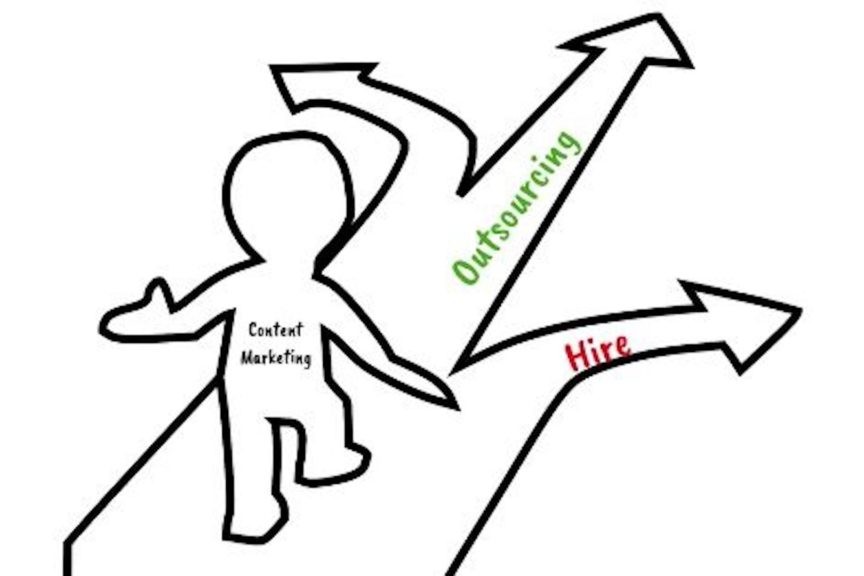Best Local Content Strategies to Attract and Retain Local Customers
Digital marketers all face the same challenge – creating compelling, relevant content that not only catches and keeps readers’ attention but motivates them to act. Locally-focused content marketers have the additional challenge of creating content that is valuable to a much smaller target audience.
If you are a digital marketer tasked with developing content for clients in a specific area, keep reading. Below are seven tips for developing an effective content strategy for local clients. These tactics work regardless if you’re selling tools, pizza or insurance.
1. Be Easy To Find.
A business should have a clear understanding of the customers they are trying to reach so they can tailor their local content marketing appropriately. Start by making it easy for potential customers in a local market to find you.
Tell them who you are, where you are, and the areas you serve. Put it right on your website (“Serving City A, City B, City C, State”, “Plumbing Professionals Serving A, B, C Counties in Maryland”), social media “About” pages, and anywhere else you may have a digital footprint. This helps boost local SEO rankings, and your name will be near the top in local search results.
2. Feel Their Pain.
Not literally, of course, but have a firm grasp of the concerns and challenges that face local clients and develop your content marketing to address them. For instance, a financial advisor in a small town, whose core customers are middle-income families with young children, might have blog posts such as “Day Trip Ideas in [City, State]”, “Kid-Friendly Summer Activities in [City, State]”, or “How to Help Your College-Bound Child Create a Budget”.
A neighborhood pizza place with a mobile food truck might have blog posts about “The Top 5 Favorite Pizza Toppings in [City, State]” or “Food Truck Festivals in [area]: Where to Find Us This Summer.”
3. Guest Blog.
Pushing out blog, social media posts and newsletter articles regularly is a challenge for even the most prolific content creator. One way to keep the well of content ideas flowing is to take a step back and allow contributions from others. Enlist the help of representatives from other local businesses as guest bloggers.
This is a great way to get different perspectives from fellow industry leaders on the same topic. A small-town financial advisor might get a guest post from their insurance agent talking about the importance of life insurance.
The guest blogger can share a link to the post on their website and/or social networks. Or, seek out guest blogging opportunities for yourself with affiliate businesses, which will drive traffic to your website and social media platforms.
4. Post Local Content On Local Landing Pages.
Clients with multiple locations should have both a central website for the business and individual webpages for each location. The links to each webpage should be available on the central site. If a customer is looking for your business, this will still put you near the top in search results, but you can post content specifically for each location on the individual webpages.
5. Encourage Customer Feedback/Engagement.
Word-of-mouth referrals may sound old fashioned, but they are still the single most effective way of getting customers through the doors of any type of business. These days, the “word-of-mouth” referral has gone digital by way of online reviews and testimonials.
Businesses shouldn’t shy away from them, but rather encourage customers to share their stories of a positive experience with others. Online reviews not only help potential customers in their buying decisions but once again, they boost a company’s rankings in search engines.
Some business executives include a blurb about leaving reviews in their email signatures or e-newsletter footers. But don’t limit it to testimonials on a business’ website. Encourage comments and reviews on social media platforms, vlogs, and other appropriate outlets. Positive reviews from satisfied customers are the best forms of marketing.
6. Engage With The Community.
Local businesses, especially the small, “Mom-and-Pop” operations, are the heart of the communities they serve. Although it’s great to tout your business as “community-minded” or “focused on our friends and neighbors,” those words should be more than a tagline – they should be true.
So get out into the community. Sponsor sports teams, participate in fundraisers, sit on boards of local organizations, and of course, promote happenings in the community through your social media or old-fashioned flyers and event posters.
By getting out of the office and into the neighborhood, so to speak, local business owners get an even better understanding of their customers’ needs and challenges, as well as the biggest issues facing the community at large.
This can lead to opportunities for partnerships to work together to tackle some of those issues. Document these efforts every step of the way so others can see what’s being done.
7. Create Unique Content.
A local business knows their market best and should understand the best way to reach that market. Who are the customers? What is the most effective way to write and promote your content?
Don’t feel the need to use the same marketing methods others use—one of the biggest advantages for a business in a small market is the ability to be creative and develop the methods that work best for you.
Whether it’s frequent social media posts, embedded video, vlogs, a company mascot whose image appears throughout your marketing, or something else entirely, use different methods to truly stand out from your competitors, even those on a local scale.
What local content strategies have you used for your clients? What were the results?






